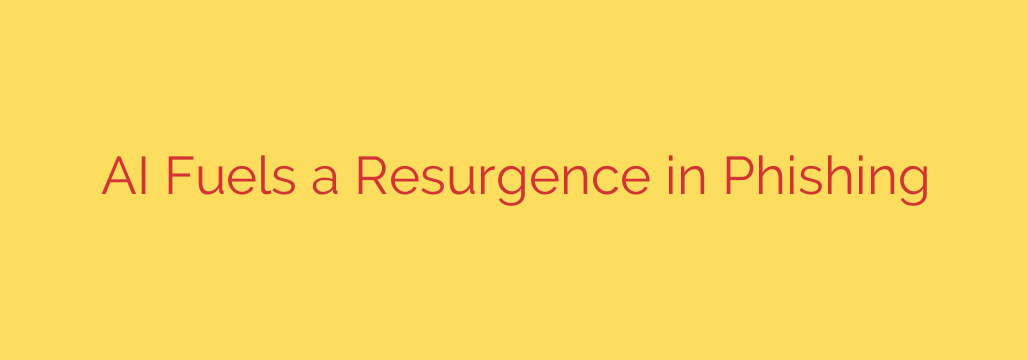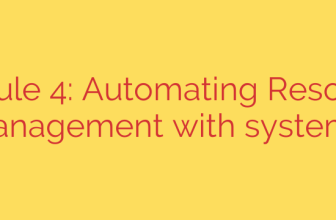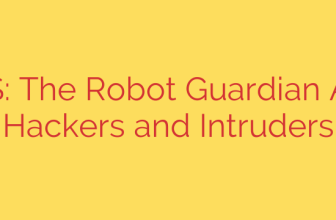
AI-Powered Phishing: Why Your Old Security Habits Aren’t Enough
For years, we’ve been trained to spot phishing emails by looking for the tell-tale signs: glaring spelling mistakes, awkward grammar, and generic greetings like “Dear Valued Customer.” These clumsy attempts were easy to identify and delete. But that era is over. Today, cybercriminals are leveraging the power of Artificial Intelligence (AI) to craft phishing attacks that are more sophisticated, personalized, and dangerously effective than ever before.
This new wave of AI-driven phishing is a significant evolution in the cybersecurity threat landscape. Instead of relying on crude, mass-produced templates, attackers are now using AI to create perfectly written, highly convincing messages at an unprecedented scale.
The AI Difference: From Obvious Scams to Flawless Deception
The classic phishing red flags are disappearing. Generative AI tools, including large language models (LLMs), can produce fluent, context-aware text that is indistinguishable from messages written by a human. This has fundamentally changed the game in several key ways:
Flawless Language and Tone: AI eliminates the grammatical errors and unnatural phrasing that once gave scammers away. It can mimic specific tones—from an urgent request from your CEO to a helpful notification from your IT department—with terrifying accuracy.
Hyper-Personalization at Scale: This is perhaps the most dangerous development. AI algorithms can scrape public information from sources like LinkedIn, company websites, and social media to craft highly personalized attacks known as spear phishing. An email might reference a recent project you worked on, mention your manager by name, or refer to a conference you attended, making the message seem entirely legitimate.
Bypassing Traditional Security Filters: Many email security systems rely on recognizing known phishing templates, suspicious links, and keywords. Because AI can generate thousands of unique variations of a single phishing message, these traditional, signature-based defenses are often rendered useless. There is no repeating pattern for them to detect.
More Than Just Email: The Expanding Attack Surface
While email remains the primary vector for phishing, AI is enabling criminals to expand their methods. We are seeing a rise in more advanced, multi-channel attacks that prey on human trust.
One of the most alarming trends is the use of AI voice cloning for “vishing” (voice phishing) attacks. A scammer can use a small audio sample of a person’s voice—often found online—to create a synthetic clone. Imagine receiving a call that sounds exactly like your boss asking for an urgent wire transfer or your family member claiming to be in trouble. The emotional manipulation of these attacks makes them incredibly potent.
Furthermore, deepfake technology, though still maturing, presents a future threat where video calls could be convincingly faked, adding another layer of deception that is difficult to debunk in the moment.
How to Defend Against the New Generation of Phishing
With attackers armed with AI, our defense strategies must also evolve. Relying on spotting bad grammar is no longer a viable strategy. Instead, individuals and organizations must adopt a more skeptical and proactive security posture.
Here are actionable steps to protect yourself:
Adopt a Zero-Trust Mindset: The core principle of “zero trust” is to never trust, always verify. Treat every unexpected request for information, credentials, or financial action with suspicion, even if it appears to come from a trusted source.
Verify Through a Separate Channel: If you receive an urgent or unusual request via email or text, do not reply directly. Instead, contact the sender using a different, known method of communication. Call them on a phone number you have on file or message them through an official company chat application to confirm the request is legitimate.
Implement Multi-Factor Authentication (MFA): MFA is one of the most effective defenses against account compromise. Even if a scammer successfully steals your password, MFA provides a critical second barrier that prevents them from accessing your account. Enable it on all your sensitive accounts, including email, banking, and social media.
Promote Continuous Security Training: For organizations, ongoing employee education is crucial. Training should now focus on the tactics of modern, AI-powered phishing, teaching staff to recognize the psychological manipulation at play rather than just looking for spelling errors. Emphasize the importance of verifying requests and reporting any suspicious messages.
Leverage AI-Powered Defenses: The best way to fight AI-driven attacks is with AI-powered defenses. Modern email security solutions use machine learning to analyze the context, intent, and sender behavior of a message, allowing them to identify and block sophisticated threats that older systems would miss.
The battle against phishing has entered a new, more challenging chapter. As cybercriminals continue to innovate with AI, our vigilance and security practices must not only keep pace but stay one step ahead. By remaining skeptical, verifying requests, and embracing modern security tools, we can build a stronger defense against this evolving threat.
Source: https://www.helpnetsecurity.com/2025/10/06/phishing-ai-enterprise-resilience-security/








